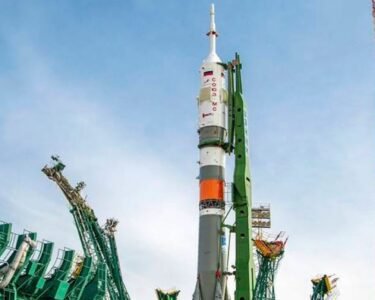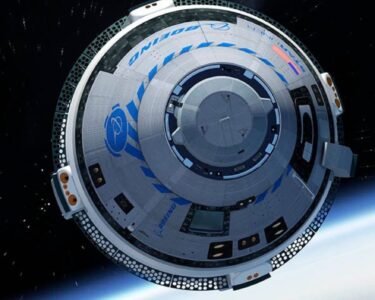Introduction
In the annals of space exploration, few names carry as much resonance as Falcon 9. Falcon 9 is a symbol of the new age of commercial spaceflight. It was built and is run by SpaceX, the aerospace manufacturer and space transport Services Company that Elon Musk started. With its unparalleled increases in dependability, affordability, and reusable nature, Falcon 9 has revolutionized the space industry since its maiden flight in June 2010. This workhorse of modern spaceflight has not only made satellite launches more economical but also restored the United States’ capability to transport astronauts to the International Space Station (ISS). Let’s delve into the remarkable journey, engineering marvels, and far-reaching impacts of Falcon 9.
The Genesis of a Visionary Workhorse
The story of Falcon 9 is one of ambition and vision. Government agencies controlled the space sector at the start of the new millennium, with private enterprises having little influence. The inception of SpaceX marked a shift towards privatization with a clear goal: to reduce space transportation costs and enable the colonization of Mars. The Falcon 9 rocket was a critical step toward achieving this goal.
Engineering Marvels behind the Falcon 9
Falcon 9 is a two-stage-to-orbit medium-lift launch vehicle powered by liquid oxygen (LOX) and rocket-grade kerosene (RP-1). Its first stage is equipped with nine Merlin engines that provide the thrust necessary to escape Earth’s gravitational pull. The second stage, powered by a single Merlin Vacuum engine, propels the payload into orbit.
Falcon 9 is different from the ones that came before it because it can be used again. The first stage is designed to return to Earth and land vertically, either on solid ground or on autonomous spaceport drone ships stationed in the ocean. This recoverability has revolutionized the economics of spaceflight. By reusing the most expensive parts of the rocket, SpaceX can significantly cut the costs of subsequent launches. This reusability has been proven with several first stages having flown multiple missions, showcasing the reliability and robustness of the system.
Falcon 9 also features many other technological innovations, such as grid fins for improved aerodynamics, a robust thermal protection system, and an autonomous flight termination system, which enhances safety by allowing the rocket to self-destruct in the event of an anomaly during the flight.
What is so special about Falcon 9?
Falcon 9 is unique because it was the first rocket with liquid-fueled engines that could be started up more than once in space. It was also the first rocket with a successful landing on its first stage on Earth after sending an object into orbit. This ability to be used again and again is a big step toward making space cheaper to use.
Why is Falcon 9 so skinny?
To be as aerodynamic and light as possible, Falcon 9 must nevertheless be strong enough to handle the fuel and cargo required for the flight. The rocket’s “skinny” design minimizes air resistance and structural weight, maximizing the efficiency of its ascent into orbit.
Impacts on Satellite Launch and ISS Resupply Missions
Falcon 9 has become a favorite for satellite launches, serving a diverse range of clients, including commercial companies, governments, and scientific institutions. It has accelerated the development of industries like space science, telecommunications, and Earth observation by making it far simpler for new satellite operators to get started.
Also, Falcon 9 has been very important for flights to bring supplies to the ISS. Through NASA’s Commercial Resupply Services program, SpaceX sent science experiments and cargo to the space station. This made sure that work and study could go on as normal.
How many satellites can Falcon 9 carry?
Based on the flight plan and the size of the satellites, Falcon 9 can carry a different number of them. For instance, for the Transporter-1 mission, Falcon 9 delivered 143 satellites to orbit, a mix of commercial and government satellites, which was a record for the most satellites deployed on a single mission.
Restoring Human Spaceflight Capabilities
One of Falcon 9’s most notable achievements is the restoration of the United States’ ability to send astronauts to the ISS. With the retirement of the Space Shuttle in 2011, the U.S. had been reliant on Russian Soyuz rockets for manned spaceflight. The development of the Crew Dragon spacecraft launched atop Falcon 9, has provided NASA with an alternative and has returned human spaceflight launches to American soil.
The Crew Dragon’s successful Demo-2 mission in May 2020, which carried astronauts Douglas Hurley and Robert Behnken to the ISS, marked a new chapter in space exploration. A commercially built and operated American spacecraft carried astronauts into orbit for the first time, marking a milestone in the commercial spaceflight industry.
Does NASA use Falcon 9?
NASA counts on the Falcon 9 for all sorts of things. They use it to send supplies up to the folks at the International Space Station with the Dragon spacecraft, to shoot off missions that help us understand space better, and even to ferry astronauts back and forth to the ISS as part of the whole Commercial Crew Program.
Global Influence and Future Prospects
Regarding the future, SpaceX’s lofty goals still rely heavily on Falcon 9. It is the foundation upon which the Starship system is being developed, which aims to carry humans to the Moon, Mars, and beyond. Falcon 9’s design and operational experience are invaluable stepping stones toward these next-generation spacecraft and missions.
Incorporating Recent Developments into the Falcon 9 Legacy
The story of Falcon 9 is continually unfolding, with each mission adding a new chapter to its storied legacy. As we look forward, it is essential to consider the most recent advancements and missions that keep Falcon 9 at the forefront of space exploration.
Why did Falcon 9 explode?
Various Falcon 9 explosions have occurred for different reasons. Occasionally, if something didn’t go according to plan during a launch, it would trigger the Flight Termination System (FTS) to kick in. This is a safety feature that destroys the rocket if it goes off track or becomes dangerous. This system is a controlled method to mitigate risk when a mission does not go as planned. Other Falcon 9 failures have been due to technical issues such as structural failures or defects in components, and not related to the FTS. SpaceX has thoroughly investigated each specific failure, contributing to design improvements and increased reliability in subsequent missions.
Upcoming Starlink Mission
In the latest development, SpaceX is poised to bolster its pioneering efforts with the imminent launch of 23 more Starlink satellites, further expanding its constellation designed to provide global internet coverage. Scheduled for liftoff on Friday from Space Launch Complex 40 at Cape Canaveral Space Force Station, this mission underscores Falcon 9’s role as a reliable and frequent pathway to orbit.
Launch Window and Conditions
The launch window is a testament to Falcon 9’s operational flexibility, opening at 6:30 p.m. Friday and featuring seven backup opportunities until 10:22 p.m. ET to account for the dynamic nature of spaceflight conditions. The careful planning that goes into each launch is evident in the 45th Weather Squadron’s forecast of an 80% chance of favorable conditions, with cumulus clouds and liftoff winds being the only noted concerns.
Backup Opportunities
SpaceX’s dedication to mission success is underscored by the eight additional backup opportunities on Saturday, Nov. 4, ensuring that even if delays occur, the mission can promptly proceed. This level of preparedness is integral to the Falcon 9 program’s success.
The Seasoned Veteran: Booster B1058
The first-stage booster assigned to this mission, designated B1058, is no stranger to the rigors of spaceflight, having already completed 17 successful missions. This seasoned campaigner’s résumé includes notable flights such as Crew Demo-2, which marked a significant milestone in American spaceflight history, various CRS resupply missions, Transporter-1 and Transporter-3 rideshare missions, and a dozen Starlink deployments. The upcoming mission will serve as another proof point of Falcon 9’s robust and dependable design, as B1058 aims to make it 18 successful flights post-mission.

Precision Landings: A Shortfall of Gravitas
Starlink 6-26 Mission: Expanding the Constellation
The forthcoming Starlink 6-26 mission has significant implications for expanding global internet access. The additional 23 satellites will join an already impressive network that consists of 5011 satellites in orbit, with 4982 operational and 4423 situated in their operational orbits, according to the latest data recorded by Dr. Jonathan McDowell from the Harvard-Smithsonian Center for Astrophysics. This expansion is indicative of SpaceX’s vision of enveloping the Earth in a mesh of connectivity, a vision that Falcon 9 continues to make a reality.
Conclusion
Falcon 9 has firmly established itself as the backbone of SpaceX’s launch capabilities. Its technological innovations made it the symbol of a new age in space exploration. With each launch, Falcon 9 demonstrates that access to space can be more reliable, frequent, and affordable.





